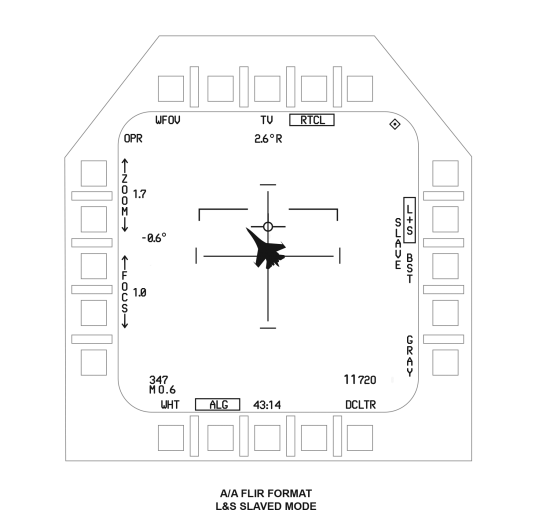Source: https://www.youtube.com/watch?v=JTUX5tgU5xo
He sums up the argument as:
This all hinges on one very important assumption, "6) FLIR was not a lucky catch. It was slaved to the radar." The problem I have with this is that the radar was not working - in that it was unable to lock onto the object, and was giving very inconsistent numbers for it. How then was it able to point the ATFLIR with 100% accuracy in the right direction, within 1% horizontally and vertically?
10:11
1) an F-18 would have been immediately identified as friendly by the IFF system. That's without question
2) an F 18 would be broadcasting its position to everybody on the data link, including underwoods.
3) an F 18 would have called out a buddy spike, if locked by friendly radar
4) an F 18 would not actively to him another f-18
5) a civilian aircraft definitely would not actively jam an F-18
6) FLIR was not a lucky catch. It was slaved to the radar.
7) everyone on the data link would have been able to see Underwood's aircraft and his prioritize target on there as a page.
It it was an F-18, then obviously it would have been on the datalink. But the question that might invalidate all the other points is: was the return on Underwood's radar that he was trying to lock onto (and, it is claimed, designated as a target) the same thing that showed up on the ATFLIR. Because if it wasn't, then the other six points are moot.
The key argument in more depth:
Again though, this all hinges on one very simple assumption, stated here as:
8:15
West has suggested that Underwood just happened to catch the unidentified craft on is FLIR. Like he was just gluing it around and happen to find something that he couldn't identify on a screen. That's not how it works. And the way the system actually works is when you see something on the radar and you designate it as your primary target. All the other sensors will look at that point. So it's everything is kind of synced together. Again, listen to what Fravor saying about how the sensors work. When a point of interest is designated by the sensor, all sensors on the aircraft point to it. Note the ATFLIR in the video is in slave mode, he was slaved to the radar. This means that the FLIR was looking at the object because the radar was, even though Underwood couldn't get a lock that doesn't mean that can't be passively designated as a priority. This is what was done, forcing the FLIR being slaved to the radar to look at the contact. This is how Underwood captured it.
Now let's put all this together. Underwood sees an unidentified contact on his radar. He immediately would have cross references SA Page, he attempts to lock it up. It jams him again. This would have been viewable on everybody's SA page. There were no buddy spike calls. The IFF system on the F-18 team did not identify it as an F-18. Nobody on the datalink told him it was a friendly fighter. For the contact to be a friendly aircraft or civilian with a transponder. A catastrophic series of failures must have occurred at every single level from the mechanical to that dozens of humans on the data link and their systems? Understanding how the correlation of sensors work in conjunction with everyone on that data link as simply as impossible.
"This means that the FLIR was looking at the object because the radar was, even though Underwood couldn't get a lock that doesn't mean that can't be passively designated as a priority. "
And how does that work? The FLIR needs an instant handover of heading and vertical angle. If the radar is being actively jammed, then where are those two numbers coming from, and how is it known they are accurate?
Underwood stated (Corbell, 7:46)
So we simultaneously have a radar that being jammed and giving all kinds of strange numbers, and you can't even get the airspeed, but is also able to hand over the exact position to the ATFLIR? It does not make sense.What was different about this was, as soon as I took that lock, the tracks started doing all sorts of just little things that are not normal, the heading was erratic, it should be able to tell me your airspeed, and also your Mach numbers. So it should say like point eight Mach for example. So you know, 80% the speed of sound, it should say that it was jumping all over the place. It was like point 8.4 point 2.1 point nine and it's just, it's just like my radar can't hack it.
Last edited:

